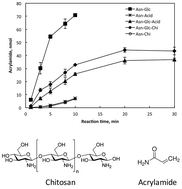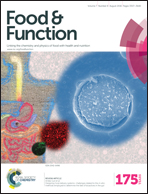Effect of chitosan on the formation of acrylamide and hydroxymethylfurfural in model, biscuit and crust systems
Abstract
Chitosan has been popular as a natural food preservative due to its antibacterial and antifungal activities. It may be used in thermally processed foods such as bread to delay staling and improve the microbial stability during the shelf-life. However, the thermal process could lead to the formation of harmful compounds in bakery products through chemical reactions, in which chitosan could take part. Therefore, this study aims to investigate the effect of chitosan on the formation of acrylamide and hydroxymethylfurfural (HMF) in different model systems. Addition of acid to the asparagine–glucose model system decreased the initial rate of acrylamide formation to approx. 4-times. The chitosan included model system contained higher acrylamide than the asparagine–glucose–acid model but still lower than the asparagine–glucose model system. The HMF content was decreased in the presence of acid due to acid-catalyzed degradation. Additionally, HMF is a potent carbonyl source and utilized in the Maillard reaction. In biscuit samples, addition of acid or chitosan solution to the dough did not significantly affect the acrylamide formation (p > 0.05), however addition of acid increased the formed HMF. In crust samples, acrylamide formation was decreased by acid, while chitosan showed no additional decrease. No interaction was found between HMF and chitosan. The results suggest that the effect of chitosan should be carefully evaluated apart from the effect of acid, in which chitosan was solubilized.

- This article is part of the themed collection: The Maillard reaction in food and nutrition

 Please wait while we load your content...
Please wait while we load your content...